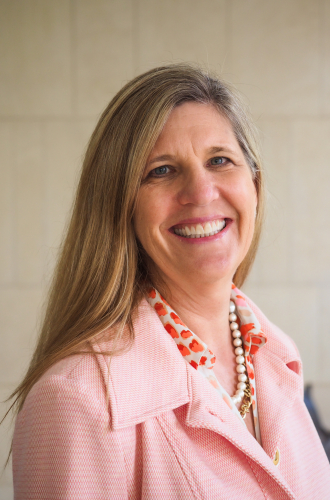-

-
Cynthia A Labrake
Professor of Instruction, TIE University Professional (Part-Time)
Biology Instruction Office, Nanomanufacturing Systems for Mobile Computing and Mobile Energy Technologieslabrake@austin.utexas.edu
Phone: 512-779-3860
Office Location
MER
Postal Address
205 W 24TH ST
AUSTIN, TX 78712-
Cynthia LaBrake recieved her BS in Chemistry with Honors from West Virginia University in 1987 and her PhD in Biophysical Chemistry from Loyola University Chicago in 1992. She completed a one year post doctoral fellowship at Loyola before relocating with her family to Austin in 1993. She has been teaching at UT Austin since 1996. Cynthia has been active in many curriculum reform efforts within the College including the co-creation of the Hands on Science Teaching program (now UTeach Primary), development work on the ChemBridge dual high school credit course, the web based general chemistry course, the transformation of the general chemistry courses including the creation of a learning assistant training course, and the curriculum redesign project in the Department of Molecular Bioscinces. She shares her teaching and learning expertise across the campus via her service in the Provost Teaching Fellows a program and by serving on a variety of committees, most recently the University Committee on Badging where she will serve as the inaugural chair of the Badging Review Board. Her interests include active learning, employing undergraduate course assistants to teach active learning at scale and provide experiential learning opportunities for the assistants, program development and assessment, and curricluar reform.
-
Cynthia LaBrake, “Active Learning in the Large Lecture Hall Environment” in Active Learning in General Chemistry: Whole-Class Solutions, ACS Symposium Series #1322, (2019) Edited by Mark Blaser, Ted Clark, Liana Lamont, and Jaclyn J. Stewart.
Catherine Riegle-Crumb, Karisma Morton, Chelsea Moore, Antonia Chimonidou, Cynthia LaBrake and Sacha Kopp (2015) “Do Inquiring Minds Have Positive Attitudes? The Science Education of Pre-service Elementary School Teachers” Science Education; Early View Online Version: Online ISSN: 1098-237X
Donna M. Budzynksi, Albert Benight , Cynthia C. LaBrake, and L. W.-M. Fung (1992) “Dynamic Light Scattering Investigations of Human Erythrocyte Spectrin” Biochemistry, 31, 3653-3660.
LaBrake, C.C and Fung, L.W-M.(1992) “Phospholipid Vesicles Promote Human Hemoglobin Oxidation” The Journal of Biological Chemistry, 267, 16703-16711.
LaBrake, C.C.; Wang, L, Keiderling, T.A. and Fung, L.W-M. (1993) “Fourier Transform Infrared Spectroscopic Studies of the Secondary Structure of Spectrin under Different Ionic Strengths” Biochemistry, 32, 10296-10302.
Lusitani, D.M; Qtaishat, N.; LaBrake, C.C.; Yu, R.N., Davis; J., Kelley, M.R. and Fung, L.W-M. (1994) “The First Human α-Spectrin Structural Domain Begins with Serine” The Journal of Biological Chemistry, 269, 25955-25958.
LaBrake, C.C. and Fung, L.W-M. (1998) “Sickle hemoglobin is more fusogenic than normal hemoglobin at physiological pH and ionic strength conditions” Biochimica Et Biophysica Acta, 1406, 152-161.
-
1/15 Jan 2015 - present University of Texas Provost Teaching Fellow
5/14 May 2014 University of Texas President’s Associates Teaching Excellence Award
8/10 August 2010 University of Texas Regent’s Outstanding Teaching Award
7/09 July 2009 University of Texas Dad’s Club Centennial Teaching Fellow
5/03 May 2003 University of Texas Natural Sciences Teaching Excellence Award
8/92 August 1992 Dumbach Award for Outstanding Chemistry Graduate Student, Loyola University of Chicago
-
BCH369 Fundamentals of Biochemistry
CH301 Chemical Principles I
CH302 Chemical Principles II
CH304K Chemistry in Context I
CH305 Chemistry in Context II
CH372C Peer Teaching and Learning
NSC306K Science for the 21st Century I
NSC306L Science for the 21st Century II
NSC306M Science for the 21st Century III
-














